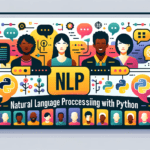Regarding data science, the ability to transform raw data into usable information, known as data wrangling, is critical. Here, we’ll look at data wrangling, its importance, and how it might help us. We’ll look at the technologies that enable it, show some instances in operation, and explain how it differs from other data processes such as ETL.
In addition, we’ll highlight the primary skills required to become proficient. This blog will help you grasp and master the skill of preparing data for analysis.
What Is Data Wrangling?
Data wrangling, often called data munging, is the process of cleaning, structuring, and enriching raw data into a desired format for convenient access, analysis, and decision-making. Data wrangling involves handling inconsistencies and missing values and making the data more usable for specific analytical purposes.
It is considered both an art and a science, requiring a blend of technical skills and analytical insight to prepare data effectively for insightful analysis.
Significance of Data Wrangling
In the age of big data, organizations collect vast amounts of data from various sources, including social media, IoT devices, and traditional databases. However, this data often comes in unstructured or semi-structured formats that are challenging to analyze directly.
Data wrangling is vital as it ensures the quality and accessibility of data, serving as the foundation for any data-driven decision-making process. By refining raw data into a more digestible form, organizations can leverage their data assets to gain competitive advantages, identify trends, and make informed decisions.
Benefits of Data Wrangling
Data wrangling streamlines the data preparation phase, offering several benefits:
- Enhanced Data Quality: It improves the accuracy, consistency, and reliability of the data, reducing errors in the analysis.
- Increased Efficiency: Automating repetitive tasks in the data wrangling process can significantly reduce the time from data collection to insight.
- Better Decision Making: Clean and structured data allows for more precise analysis, leading to better, data-driven decisions.
- Scalability: Effective data wrangling practices can handle increasing volumes of data, facilitating scalable data analysis strategies.
Data Wrangling Tools
Various data wrangling technologies may be utilized to collect, import, structure, and clean data before feeding it into analytics and Power BI applications. You can utilize automated tools for data wrangling, which allow you to test data mappings and examine data samples at each stage of the translation process. This allows for the speedy detection and correction of data mapping issues.
In addition, automated data cleansing becomes required when firms deal with huge data volumes. The data team or scientist oversees data cleansing operations requiring manual intervention.
Examples of primary data munging tools include:
Spreadsheets / Excel Power Query is the most basic manual data wrangling tool.
OpenRefine is an automatic data cleansing solution that demands programming abilities.
Tabula is a tool suitable for all data kinds.
Google DataPrep is a data service that analyzes, cleans, and prepares data.
Data wrangler is a data cleaning and transformation tool.
Data Wrangling Techniques
Techniques that are essential for converting raw data into a format ready for analysis. Include:
- Data Cleaning:
-
- Identifying and correcting errors within the data.
- Dealing with missing values to ensure dataset completeness.
- Removing duplicate entries to maintain data accuracy.
- Data Transformation:
- Normalizing data to bring different scales to a standard scale.
- Aggregating data to summarize.
- Manipulating data to match the specific requirements of an analysis.
- Data Integration and Enrichment:
- Combining data from multiple sources to create a unified dataset.
- Adding context to data through enrichment enhances its value and usability.
Throughout this process, tools and programming languages like Python and R, along with libraries such as Pandas and dplyr, are fundamental. These resources facilitate the efficient application of data wrangling techniques. By ensuring datasets are clean, comprehensive, and well-structured, these methods pave the way for meaningful analysis and informed data-driven decisions.
Examples of Data Wrangling
An example of data wrangling could involve a dataset with sales information from multiple sources. The process might include:
- Removing duplicates.
- Handling missing values.
- Standardizing date formats.
- Merging datasets from different regions into a single, comprehensive sales report.
Furthermore, these examples might involve preparing social media data for sentiment analysis. This process could entail extracting relevant text from social media posts, removing noise (such as URLs and mentions), and normalizing abbreviations and slang for more accurate sentiment detection.
Skills Required for Data Wrangling
To excel in data wrangling, professionals need a blend of technical and analytical skills:
- Programming Knowledge: Proficiency in languages like Python or R is crucial, as they offer extensive libraries and frameworks for data manipulation.
- Understanding of Data Structures: A solid grasp of data structures and algorithms helps efficiently process and analyze data.
- Data Cleaning Techniques: Skills in identifying and correcting errors in data, handling missing values, and data standardization are essential.
- Data Visualization: The ability to visualize data effectively can help identify trends, outliers, and patterns.
- Critical Thinking and Problem-Solving: The ability to approach data challenges creatively and solve problems systematically is vital.
- Communication Skills: Presenting data findings clearly and effectively to stakeholders is crucial for driving decision-making.
Sum Up:
Finally, data wrangling is essential in data analysis, ensuring that raw data is turned into a clean, structured format suitable for insight generation. With the correct tools, methodologies, and talents, data wrangling can unleash the full potential of any organization’s data assets, allowing for more informed decision-making and strategic growth. Moreover, Whether you’re a data scientist, business analyst, or IT professional, strengthening your data wrangling abilities is a definite way to enhance them.




